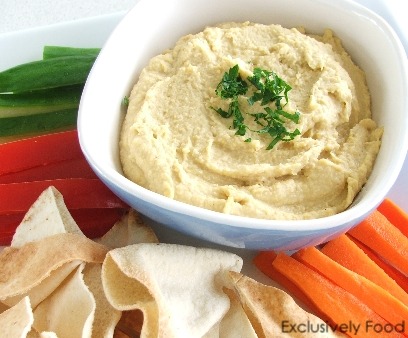Most of us need an extra boost of energy to help us
get through the day. But the mistake lots of people make is reaching for
caffeine or candy as the source of that energy. Instead, they should be
choosing foods that are full of protein, fiber, complex carbohydrates, and
other nutrients. Not only will you get the energy you want, but your body will
be much healthier and happier. Read on for some healthy, energy-sustaining
snack and meal ideas.
 Almonds
– Almonds contain magnesium and B vitamins that your body converts into energy.
“Research shows that people with low magnesium levels tend to tire more quickly
during exercise due to magnesium’s role in energy metabolism,”[1]which
makes almonds (and some other healthy nuts) great for before or after a
workout.
Almonds
– Almonds contain magnesium and B vitamins that your body converts into energy.
“Research shows that people with low magnesium levels tend to tire more quickly
during exercise due to magnesium’s role in energy metabolism,”[1]which
makes almonds (and some other healthy nuts) great for before or after a
workout.
Air-Popped
Popcorn – You may be surprised that this made the list, but
I’m not talking about the buttery, salty, oily popcorn you get at the movie
theater. Air-popped popcorn can actually be a whole-grain healthy food if you
leave off all the toppings. It satisfies cravings for a crunchy snack like
chips and crackers, but it keeps you full longer because it provides volume.
Peanut
Butter – Stick with organic options or nut butters with
only nuts and no added sugars, and you’ll have a delicious energy boost full of
healthy fats, protein, and fiber. Remember, though, that even with the
healthier nut butters, a little goes a long way, so be mindful of overeating them.
 Salmon
– I’ve recommended them before and I will again: omega-3 fatty acids. These
nutrients have been proven to improve memory function and reduce depression, as
well as benefiting energy and mood.[2]
According to a recent review of brain foods, “studies on seniors and children
alike have found positive brain benefits from health foods, like salmon, that
have omega-3s along with other nutrients. Salmon is also a rich source of
protein, which promotes muscle building to keep the body functioning at its
best.”[3]
Salmon
– I’ve recommended them before and I will again: omega-3 fatty acids. These
nutrients have been proven to improve memory function and reduce depression, as
well as benefiting energy and mood.[2]
According to a recent review of brain foods, “studies on seniors and children
alike have found positive brain benefits from health foods, like salmon, that
have omega-3s along with other nutrients. Salmon is also a rich source of
protein, which promotes muscle building to keep the body functioning at its
best.”[3]
Bananas
– For a great breakfast to start the day or even a pre- or post-workout snack,
eat a banana along with a glass of low-fat milk or a cup of yogurt. Bananas are
full of fiber, B vitamins, and potassium, all of which promote energy and
muscle function.
Kale
– Leave behind the iceberg lettuce in favor of kale, which contains L-tyrosine,
an amino acid that gives you a mental lift, as well as antioxidants and fiber. You
can also cook it as a side dish to any meal, chop it up for soups, or toss it
with whole-wheat pasta. You can even include it in a smoothie for an added
healthy kick.
Oatmeal
– Full of fiber, oatmeal is another great option to start your day and power
through the morning. Fiber takes a while to digest, which keeps you full and focused
on your tasks instead of snacking. It’s definitely a much better breakfast than
sugary alternatives like toast and jelly!
Pistachios
– Not only are pistachios delicious and buttery-tasting, but they also have
protein, fiber, and monosaturated fat that is good for the heart. Nuts are
generally calorie dense, but 25 pistachios only have 100 calories.
 Hummus
– Hummus has a few simple ingredients, all of which contribute their own
nutrients for energy: pureed garbanzo beans, sesame-based tahini, olive oil,
and lemon juice. “The fiber and protein provided by the beans stabilize blood
sugar, take the edge off hunger, and boost energy…When used as a dip for
nutrient-rich veggies, such as red pepper strips or carrot sticks, hummus makes
for a protein-packed treat. Or use it as a sandwich spread instead of
mayonnaise.”[4]
The options for hummus are endless.
Hummus
– Hummus has a few simple ingredients, all of which contribute their own
nutrients for energy: pureed garbanzo beans, sesame-based tahini, olive oil,
and lemon juice. “The fiber and protein provided by the beans stabilize blood
sugar, take the edge off hunger, and boost energy…When used as a dip for
nutrient-rich veggies, such as red pepper strips or carrot sticks, hummus makes
for a protein-packed treat. Or use it as a sandwich spread instead of
mayonnaise.”[4]
The options for hummus are endless.
Greek
Yogurt – Greek yogurt can be eaten for breakfast, lunch,
or a snack, and it has twice the amount of hunger-satisfying protein as regular
yogurt. Throw in some healthy toppings like fresh berries and chopped nuts to
provide your body with even more nutrients. Watch the calories, though, and go
for nonfat or low-fat Greek yogurt rather than the full-fat kind.
So, the next time you’re about to brew that
caffeinated morning coffee or grab a sugary donut at the office to keep you
going until lunchtime, remember that there are much healthier, tastier, and
overall more beneficial alternatives.
“Working
to restore GOD’s perfect design in you!”


